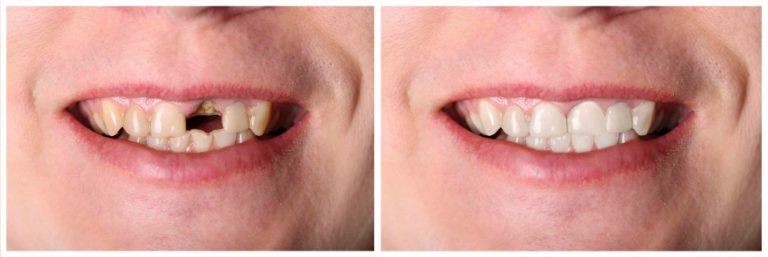
Your teeth are an essential part of your oral structure, function and comfort, which is why it is so important to take good care of them. In an ideal world, your teeth would never experience any undesirable issues and would remain strong, healthy and intact throughout your entire life. Unfortunately, there are so many factors that contribute to your oral hygiene and health condition that your teeth inevitably need some help at some point. And although tooth replacement options, such as dental implants, have become more advanced in recent years, nothing can work quite as well as your natural teeth. They are part of a complex system that is made up of nerves, tissues and bones, and as such are essentially irreplaceable. It is for this reason that, should anything happen to your natural teeth, your dentist will recommend saving as much of them as possible through the appropriate dental restoration procedures.
Basics of Tooth Restoration
When your dentist has determined that your tooth is in need of restoration, he will consider the extent of the damage or decay and the type of restoration that is most appropriate to restore tooth structure and function. The most common types of tooth restoration include:
- Bonding. This restoration procedure can help to take care of minor chips in and gaps between the teeth, as well as stained and even misshapen teeth.
- Bridges. These work to support replacement teeth so that they are as strong as necessary to provide adequate support.
- Crowns. Crowns are useful for restoring teeth that have suffered extensive decay, wearing from tooth grinding, cracks or other major structural issues.
- Fillings. This restoration is used in order to repair small fractures, decay and other surface damages.
- Dentures. From partial dentures to complete dentures, this dental restoration works to replace anywhere from a few missing teeth to a complete set of missing teeth.
- Inlays and onlays. Where tooth decay or damage is too extensive to be resolved through dental fillings but not quite extensive enough to warrant the use of a dental crown, inlays or onlays may help to restore the chewing surface.
Depending on the type of restoration that is being used, the procedure can either be completed in a single dental visit (as in the case of bonding, fillings, inlays and onlays) or over the course of a couple dental visits (as in the case of bridges, crowns and dentures).
There are many great advantages to tooth restoration, including:
- Improved comfort. Any amount of tooth decay, damage or loss is uncomfortable to deal with. Restoring the structure of teeth can help to restore their function and comfort.
- Normal biting force. Needless to say, teeth that have been weakened due to damage or decay cannot be used normally. In most cases, restored teeth are able to maintain their normal biting force so that you can continue to eat the fruits, vegetables, meats and snacks you most enjoy.
- More cost-effective. While it is true that tooth restorations cost money, they are still more cost-effective than dealing with the bacterial infections and other issues that often come with teeth that have compromised health.
- Natural-looking. Most of the time, tooth restorations can approximate the appearance of natural teeth very closely, so that attention is not drawn to misshapen, damaged, decayed or missing teeth.
When you have received any sort of tooth restoration treatment it becomes even more important to establish and maintain excellent oral hygiene. This includes brushing your teeth at least twice a day, flossing your teeth at least once a day, visiting your dentist at least twice a year for examinations and cleanings, and eating a healthy, balanced diet. If you have any questions about your oral health or tooth restorations, Contact Todays Dental Now.
[text-blocks id=”internal-page-footer”]





